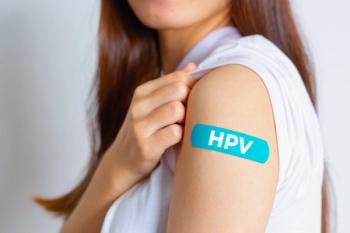
Complicated IUD removals linked to age and language barriers
A study found that 11% of intrauterine device removals have complications, with higher rates among Spanish-speaking patients.
Investigators of a study published in August 2025 have highlighted a need for increased instrumentation or ultrasound guidance in approximately 11% of intrauterine device (IUD) removal cases, influenced by race and ethnicity, age, and primary language.1
An increase in long-acting reversible contraception use has been observed in US patients over time, from 6 per 10,000 patients in 2010 to 14.1 per 10,000 in 2020. These include IUDs, which may have complications during removal, such as missing strings, perforation, malposition, or uterine wall embedment.
“Few large studies report the incidence of complicated removals; two smaller studies found that approximately 80% of cases were uncomplicated,” wrote investigators.
Defining complicated vs uncomplicated IUD removal
The retrospective chart review was conducted to evaluate complicated IUD removal rates in a large health care system and determine how these rates are influenced by sociodemographic factors. Successful IUD removals from January 1, 2017, to December 31, 2020, in patients aged 15 to 25 years were included in the analysis.
Participants were identified from diagnosis codes within inpatient and outpatient records. Investigators defined uncomplicated removals as office-based procedures with visible strings not requiring imaging or specialized instrumentation.
Conditions of complicated removal included ultrasound guidance, additional instrumentation, hysterectomy, and surgical removal in an operating room. Two independent reviewers performed a chart review.
Factors linked to complicated removal
There were 1803 IUD removals included in the final analysis, 11.4% of which were considered complicated. This indicated an incidence of 113.7 per 1000 IUD removals. Independent associations for age and race with operating room were reported, though age was the only variable with a significant link to complicated removal.
Of complicated removals, 69.8% were performed in the office while 30.2% required intervention within the operating room. Additionally, 50.2% of complicated removals involved hysterectomy, and 21% involved ultrasonography.
While race, ethnicity, and body mass index were not associated with complicated IUD removal, an increase in prevalence was reported in Spanish-speaking patients, with a rate of 17.8% vs 11.2% in English-speaking patients. In patients speaking other languages, the rate was 4.8%.
Possible causes of disparities in care
Operating room removals were also more common in Spanish-speaking patients, with a rate of 6.9% vs 3.4% in English-speaking patients. Overall, the data highlighted the incidence and factors linked to IUD. Investigators concluded this information may be used to inform patient counseling and clinical decision-making.
“The higher rates of complicated and operating room removals among Spanish-speaking patients may reflect disparities in health care access, communication barriers, delayed follow-up, or clinician biases, all of which warrant further investigation,” wrote investigators.
Increased long-acting contraceptive use has also been observed following the Supreme Court’s Dobbs v. Jackson Women's Health Organization in June 2022.2 Between the pre-Dobbs and post-Dobbs period, a 1% increase in IUD use has been observed, from 47% to 48%.
Permanent contraception on the rise
In comparison, permanent contraception methods have significantly increased in prevalence. This includes a rise in salpingectomy rates of 9% and a rise in vasectomy rates of 49%. Rising rates of salpingectomy were also reported in nulliparous women, from 4.88% pre-Dobbs to 9.09% post-Dobbs.
These increases in long-acting contraception use have been linked to reductions in rates of childbirth. While women receiving salpingectomy reported having the most children, rates decreased from a mean of 2.87 pre-Dobbs to 2.17 post-Dobbs. Investigators concluded that more invasive and longer-lasting contraception is being used post-Dobbs.
References
- Coles M, Dedhia D, Alvarez A, Sanghani S, Blitz M, Gerber S. Incidence of complicated intrauterine device removal in a large health care system. O&G Open. 2025;2(4):e105. doi:10.1097/og9.0000000000000105
- Krewson C. Longer lasting contraception use reported post-Dobbs. Contemporary OB/GYN. October 18, 2024. Accessed August 20, 2025. https://www.contemporaryobgyn.net/view/longer-lasting-contraception-use-reported-post-dobbs
Newsletter
Get the latest clinical updates, case studies, and expert commentary in obstetric and gynecologic care. Sign up now to stay informed.











